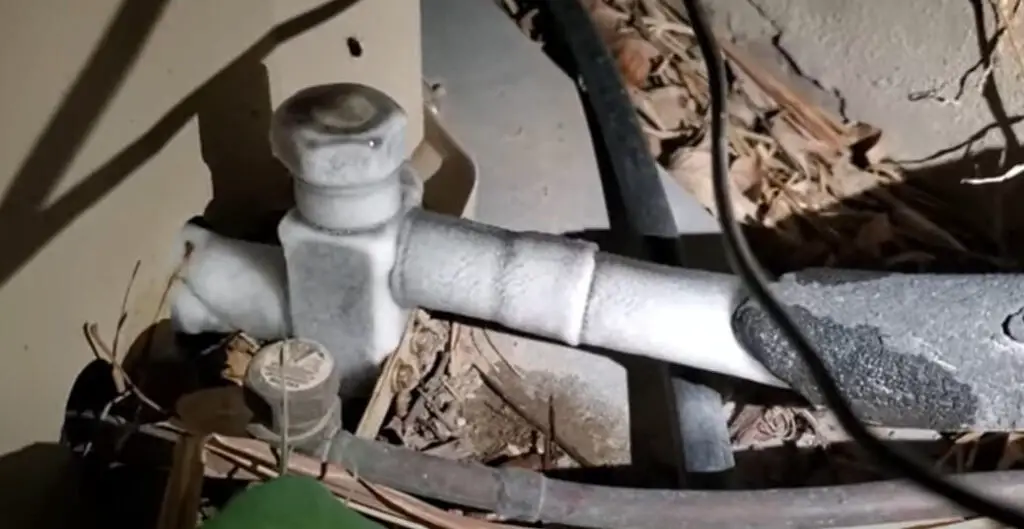The content down below relating to Air Conditioner Frozen? How To Fix your Frozen AC Line is incredibly captivating. Don't overlook it.

Introduction
Discovering that your air conditioning pipe is frozen can be concerning, specifically throughout warm summer season when you rely upon your a/c the most. Recognizing what to do in such a situation is vital to avoid additional damages to your cooling system and ensure your comfort indoors.
Recognizing the Causes
Numerous aspects can add to the freezing of an AC pipeline. Recognizing these causes can assist you attend to the concern properly.
Absence of Airflow
One common root cause of a frozen air conditioner pipe is inadequate airflow. When the air flow over the evaporator coil is limited, it can create the coil to go down below freezing temperature level, leading to ice formation on the pipeline.
Low Refrigerant Levels
Inadequate refrigerant degrees in your air conditioning system can likewise result in a frozen pipeline. Reduced cooling agent degrees can create the pressure in the system to drop, leading to the cold of moisture on the evaporator coil.
Winter Conditions
In colder climates, freezing temperature levels outside can contribute to the cold of air conditioning pipes. If your air conditioning device is not effectively insulated or if there are leakages in the ductwork, chilly air can infiltrate the system, causing the pipe to ice up.
Dirty Air Filters
Unclean or blocked air filters can restrict air movement in your a/c system, causing numerous concerns, including an icy pipe. It's important to replace or cleanse your air filterings system routinely to make sure correct air flow and prevent ice accumulation.
Indicators of a Frozen AC Pipe
Acknowledging the signs of an icy AC pipe is essential for timely activity.
Decreased Airflow
If you discover a substantial decrease in air flow from your vents, it can indicate a frozen pipe.
Ice Buildup on the Pipe
Visible ice accumulation on the refrigerant line or the evaporator coil is a clear indication of a frozen AC pipe.
Odd Sounds from the Unit
Unusual audios, such as hissing or gurgling, coming from your air conditioner device can signify that there's ice present on the pipeline.
Immediate Actions to Take
When faced with an icy air conditioning pipeline, it's vital to act swiftly to avoid more damage to your air conditioning system.
Switching off the AC
The initial step is to switch off your air conditioning system to avoid the system from running and aggravating the problem.
Looking for Blockages
Inspect the location around the interior system for any type of blockages that may be obstructing air flow, such as furnishings or drapes.
Thawing the Pipe
You can use mild approaches like positioning towels soaked in cozy water around the icy pipeline to help thaw it slowly.
Preventive Measures
Taking safety nets can help prevent future occurrences of a frozen air conditioning pipeline.
When DIY Methods Fail
If your efforts to thaw the pipeline or address other concerns are not successful, it's time to contact a professional.
Relevance of Hiring a Professional HVAC Technician
A licensed HVAC service technician has the proficiency and tools essential to diagnose and repair concerns with your air conditioning system securely and efficiently.
Regular Maintenance Checks
Schedule normal maintenance consult a specialist HVAC technician to make sure that your air conditioner system is running successfully.
Transforming Air Filters
Frequently change or cleanse your air filters to stop air flow restrictions and preserve optimal performance.
Shielding Exposed Pipes
If your AC pipes are exposed to chilly temperatures, consider shielding them to prevent cold during winter season.
Looking For Professional Help
If DIY methods fall short to deal with the problem or if you're uncertain regarding just how to continue, it's ideal to seek aid from a certified HVAC technician.
Conclusion
Managing an icy AC pipeline can be an aggravating experience, however understanding how to respond can help lessen damage and bring back convenience to your home. By comprehending the reasons, acknowledging the indicators, and taking prompt action, you can effectively attend to the issue and protect against future occurrences.
What to Do If Your AC Line Is Frozen
Make Sure All Supply and Return Air Vents Are Open
If you notice problems with airflow, the first thing you should do is check your supply and return vents. Supply vents distribute clean, conditioned air throughout your home. As this air becomes stale, it’s pulled into the return vent, where it’s reconditioned before being sent back out through the supply vent.
When these vents are closed, air won’t flow in the home. Before examining your AC, check the vents in every room and ensure they’re all open.
Check for a Dirty Air Filter
Another possible cause of limited airflow is a dirty air filter. Your air conditioner’s filters catch elements you don’t want to breathe in, such as dirt and dust. Over time, filters can become clogged, ultimately blocking air from flowing in and out. The lack of airflow can then cause the entire coil to freeze and will completely restrict any air from moving through it. The AC may need to be powered off for one to two days to allow the coil to thaw after replacing the filter to allow proper functioning of the unit. This debris can also accumulate on your AC’s evaporator coil, requiring a more serious repair. In general, air filters should be cleaned regularly (about every two weeks).
Assess Your Outdoor Unit
In addition to checking your AC, assessing the outdoor unit is a good idea. Also known as the condensing unit, it works with your interior unit to release heat outside. An issue with the outdoor unit can result in rising internal temperatures.
Overgrown Shrubs or Clogged Leaves
From leaves and twigs to shrubs and debris, there’s no shortage of outdoor elements that can accumulate around your condensing unit. When these elements get lodged inside the unit, they can block airflow. Fortunately, removing the blockage can solve the problem.
Sounds of a Broken Fan
Shrubs and leaves aren’t the only things that can impede your outdoor unit’s airflow. If the fan is broken, the unit won’t be able to properly get rid of heat — which means the internal temperature won’t go down. First, make sure the fan is spinning. If it is, check for the following sounds of a broken fan:
- Buzzing
- Rattling
- Screeching
- Hissing
- Clicking
Preventative Measures
Nobody wants to deal with a frozen AC line. In addition to causing problems with your air conditioner, they require professional repairs. On the bright side, there are preventative measures you can take to help ensure this issue doesn’t arise in the first place.
https://www.coopergreenteam.com/blog/what-to-do-if-ac-line-frozen

As a serious reader on Why Is Ice On My Outside Air Conditione, I figured sharing that piece of content was sensible. If you please take a moment to share this page if you appreciated it. We treasure reading our article about What Do I Do If My AC Pipe Is Frozen.
Click
Comments on “The Air Conditioner Pipe Is Completely Frozen - What Should I Do? Steps for Resolution”